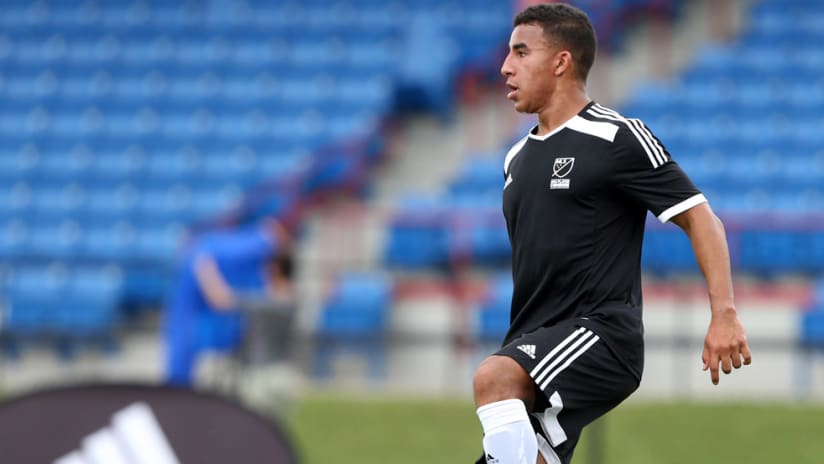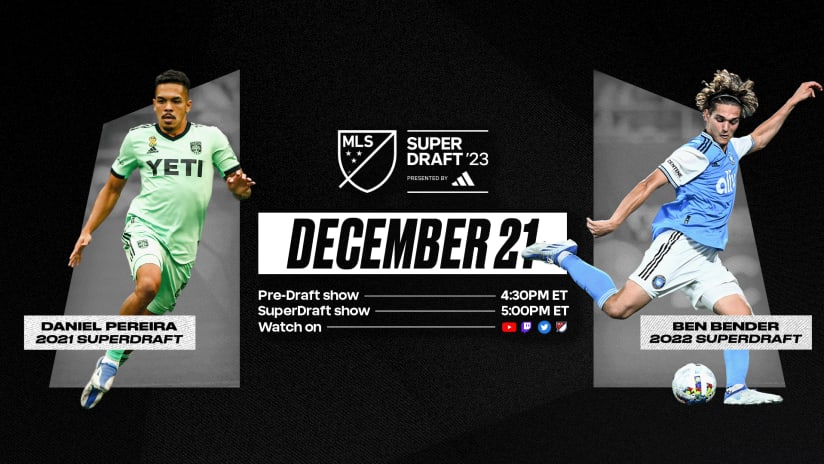Here's a thing: If you're reading this, you probably know what Darlington Nagbe plays like, or what kind of center back Bobby Boswell is. You have an idea of Wil Trapp's strengths and weaknesses, and you know where on the field Chance Myers plays. So if I compare one of this year's SuperDraft prospects to one of the above players (or any of a plethora of others), you have some idea of what I'm talking about.
That does not mean I'm offering dead reckonings about specific players here. No two people are the same, and no one should offer a value judgement on a college kid that's in the neighborhood of an actually accomplished pro.
- READ MORE: 2016 SuperDraft coverage on MLSsoccer.com
So the below is sort of a baseline guide about the likely top picks in the draft, meant to give you a better understanding of how and where these guys play. It's not a prediction for how much success they will or won't have in the league.
2016 SuperDraft Prospect Comparisons
Josh Yaro, CB, Georgetown (GA)
Yaro's best comp is probably New England's Andrew Farrell, who went No. 1 overall three years ago. Like Farrell, there are questions about his size for center back, and depending upon who drafts Yaro (I still think it'll be the Fire), he may actually spend a couple of years at right back. Again, that's just like Farrell.
The difference is that while Farrell bounced from position to position in college, Yaro's been in the middle of the backline the whole time. He's also less adventuresome on the ball, so I think the right coach will trust him in the middle a little bit earlier in his career than Farrell.
Jack Harrison, MF, Wake Forest (GA)
Harrison is a strong and proud two-way player who might be a central midfielder, or might be a winger. It all depends upon fit for the team that picks him up.
The same could be said about LA Galaxy's Sebastian Lletget. Harrison doesn't quite have the same nose for goal and might project as a better creator, but the intensity on both sides of the ball is there, as is the skill.
Richie Laryea, MF, Akron (GA)
The name that gets thrown around most when folks talk about Laryea is Nagbe's. And it's usually followed by "It took five years to figure out where to play him."
Laryea, like Nagbe, has the athletic gifts to play on the wing, but he naturally comes to the ball instead of stretching the field. That means whoever takes him is likely to use him in central midfield, probably in a 4-3-3. Laryea's athletic gifts aren't nearly as game-breaking as Nagbe's, and he's not nearly as secure on the ball, which will prolong his transition from "kid with potential" to "starter."
But a poor man's Darlington Nagbe is still probably going to be a really good player.
Omar Holness, MF, North Carolina (GA)
Like Laryea, Holness has a lot of people stumped. He's played on the wing at the Combine and in the center of midfield in a 3-5-2 for his college team, and it's unclear where his future lies for Jamaica (he's already earned a cap).
My best guess says box-to-box central midfielder in the mold of Sporting KC's Roger Espinoza. He's not creative enough to be a pure attacker and he's not a "sit deep and hold" midfielder. Rather, he's an honest runner with skill and a bit of an edge in the challenge.
Julian Buescher, MF, Syracuse (GA)
Almost every coach I've talked to ranks Buescher as the best player at the Combine, but literally every one of them is scared by a perceived inability to cover ground in central midfield. Wherever he plays, he'll need the right partner.
That's not unlike Colorado's Dillon Powers, who I maintain is being used out of position as a No. 10. Powers was damn near an All-Star in 2013, when he was a rookie, sitting deeper as a No. 8 and controlling the shape and pace of the game. Buescher could do the same thing in the right spot.
Fabian Herbers, F, Creighton (GA)
Herbers was incredibly productive as a collegian, racking up 15 goals and 17 assists in his senior season for the Blue Jays. The issue is that he did so mostly as a second forward, not as a No. 9, and few MLS teams play with a second forward these days.
The ones who do, though, put the names in bright lights: Sebastian Giovinco, Robbie Keane, Clint Dempsey, Chris Wondolowski and Fabian Espindola are a few. Of that group, Herbers is probably most like Wondo in that he creates his openings with good movement rather than individual skill.
Andrew Tarbell, GK, Clemson (GA)
Tarbell is big and long, and he has great reflexes. His No. 1 quality as a 'keeper is that he's a superior shot-stopper.
His biggest issues are that he's a bit slow off his line at times, and that he's not great with his feet. In a lot of ways, this is pretty close to what Sean Johnson was when he came into the league half a decade ago with the Chicago Fire.
Brandon Vincent, LB, Stanford
There's no left back in MLS who's quite like Vincent, so I'm going to flip to the other side at right back and make the Sean Franklin comparison. Like Franklin, Vincent's played a good bit of center back, and like Franklin, that's left his attacking instincts less than sharp from time to time. He'll drop back when he should push, or he'll pinch in when he should stay wide, and it's weird.
The good news is that Vincent's almost certainly going to come into the league as a left back only, and that he's an even better athlete than Franklin. He is pretty close to a "sure thing."
Keegan Rosenberry, RB, Georgetown
Rosenberry has been one of the standout players of the Combine, solidifying his credentials as the SuperDraft's top right back. His greatest skill is that he's really good at every aspect of his job, and that he almost never strands his teammates with sloppy passing.
This is the exact type of skillset that's made RSL's Tony Beltran one of the best right backs in MLS over the past decade, and earned him a few national team caps as well. Rosenberry has that kind of potential.
Jonathan Campbell, CB, North Carolina
Campbell isn't huge, but he's broad-shouldered and is reliable distributor from the back. He won't break the game open on either side of the ball, but he'll keep it moving and knows how to communicate.
The best comparison is probably Damien Perrinelle of the New York Red Bulls, though that's a reach since Perrinelle can be very good in 1-on-1 defensive situations, while Campbell is sometimes awkward on the turn.














